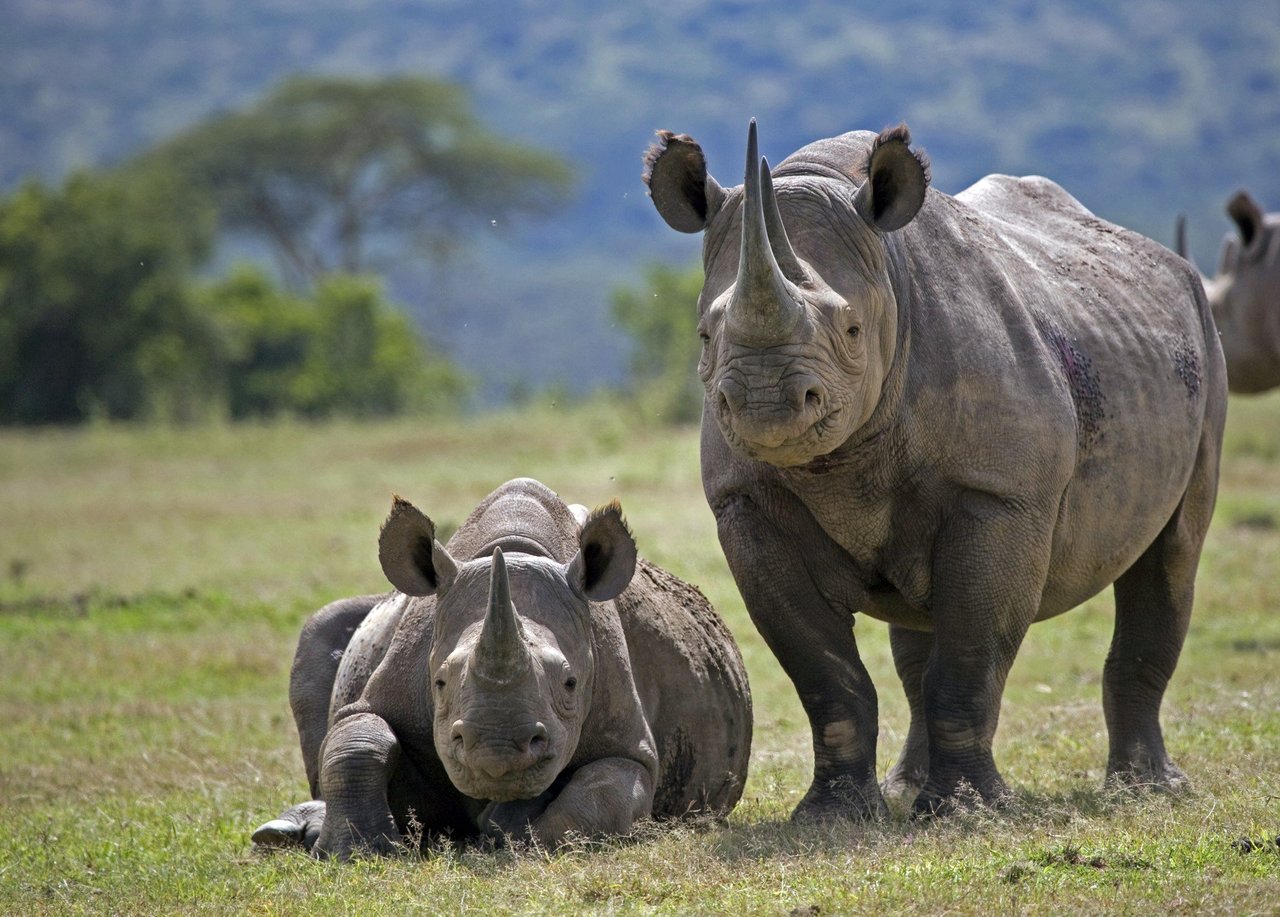
It’s World Rhino Day, which is a great excuse to learn more about these beautiful animals!
1. There are five species of rhinos
Two species live in Africa–the black and white rhino. Some scientists categorize them further into subspecies (such as the northern white rhino). The other three species are found in Asia–the Javan, Sumatran, and Indian (sometimes known as the greater one-horned) rhino. One easy way to tell African and Asian rhinos apart is their skin. Asian rhinos have significantly more skin folds than African rhinos. How neat!
2. A group of rhinos is called a “crash”!
Rhinos are typically solitary animals. But, when they do find themselves in groups, it’s referred to as a crash. Perhaps their booming footsteps sound like a crash of thunder?
3. They secretly communicate with one another
Rhinos use a form of communication called infrasonic frequency, which are sounds below the threshold of human hearing. Scientists hypothesize that rhinos developed this adaptation due to the dense vegetation found in their natural habitats. Infrasonic frequencies travel easier through dense areas, making it easier for rhinos to keep tabs on one another.
4. Rhino horns are just like our fingernails?
It’s true! Rhino horns are made from keratin, a protein which is the building block of human fingernails and hair. Imagine having that strong of hair! Additionally, the rhino’s horn continues to grow throughout their lifetime. The record rhino horn is just shy of 5 feet long!
5. Rhino populations are declining
Three out of the five rhino species are “critically endangered” per the IUCN Red List. Some researchers even believe the Northern White Rhino to be extinct in the wild. Their population is threatened due to poaching in Africa and habitat loss in Asia.
Rhinoceroses are facing habitat loss as a result of deforestation in order to change the landscape for agriculture production and other human activity. The demand for animal products across the world places an overwhelming environmental toll on our planet. Particularly, the amount of feed required for billions of farmed animals is unsustainable and causes natural habitats to be destroyed and biodiversity to be threatened.
While it may seem out of reach to help an animal in another part of the world, you can make profound change for animals by reducing your meat consumption. By eating less meat, you can take a stand for the environment and all animals threatened by agriculture-driven habitat loss.
